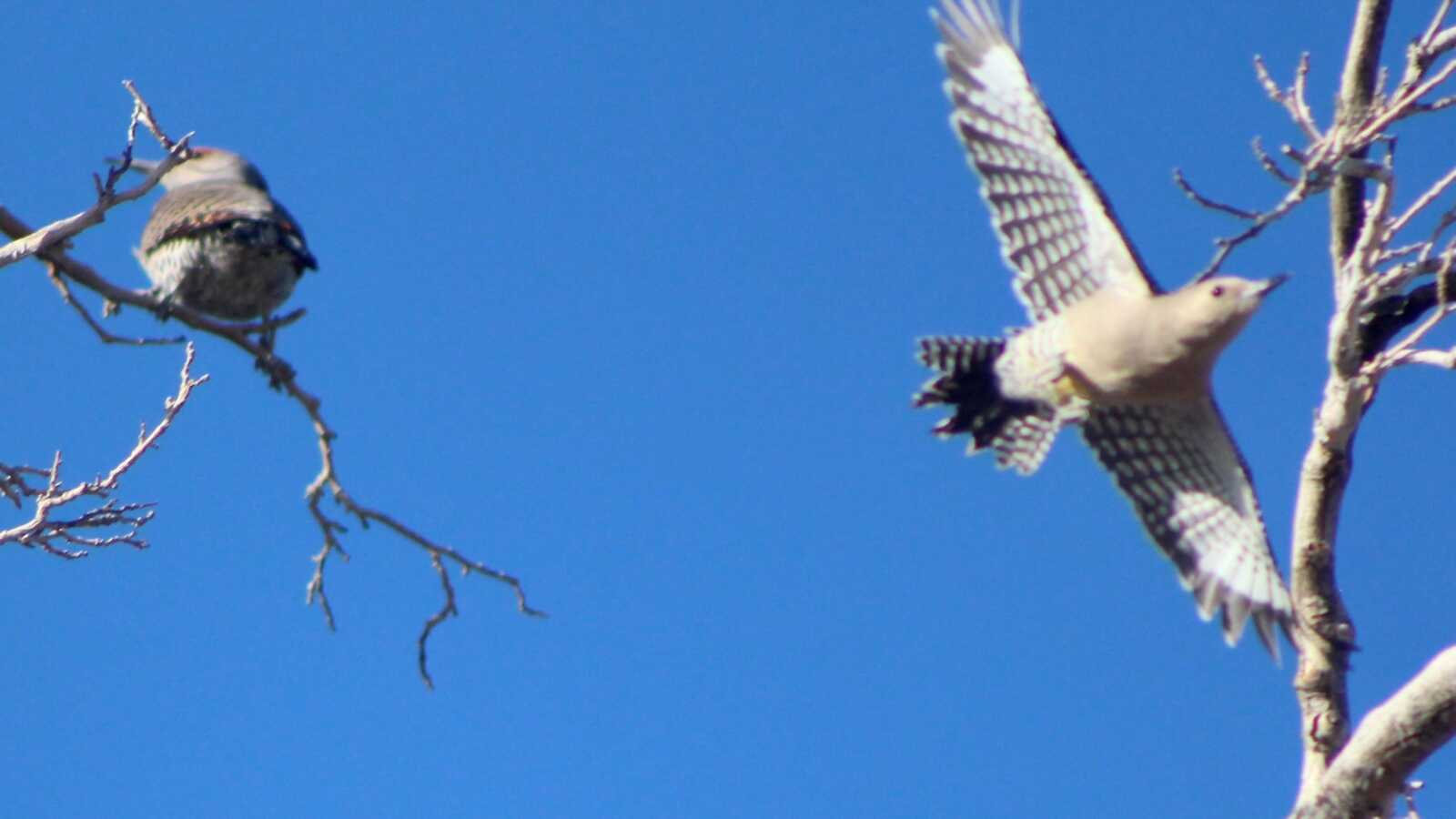
Quiz for Mar 2023
Quiz kindly prepared by Ava.
Photo taken in Imperial County in February. Here we have two out-of-focus birds that may or may not be the same species. Although one is perched and the other in flight, key field marks are still visible on each.
Answer will be displayed on April 1.
Answer:
There are many places to start identifying these birds, but let’s begin by looking at their size and shape. Compared to the surrounding branches, these look bigger than a sparrow or warbler but smaller than a crow or hawk. Based on their medium size, chisel-like bills, and checkered patterning, we can quickly guess that these are woodpeckers. But which species? When you know what family a bird fits into, it can be helpful to go within and try to categorize it further to help identify it. Birds within the same genus are more closely related than those not in the same genus, and often, but not always, they look similar.
Let’s look at the flying bird first. Since we’re confident it’s a woodpecker, we’ll look within the woodpeckers. In southern California, we find four genera of woodpeckers. Sphyrapicus includes all four sapsuckers; Melanerpes includes Lewis’s and Acorn Woodpeckers and the Gila/Golden-fronted/Red-bellied trio; Dryobates includes Downy, Hairy, and Nuttall’s Woodpeckers, and finally, Colaptes includes our two flickers, Northern and Glided. Our bird has black-and-white barring in the wings and noticeable white patches in the primaries visible from below. Of those mentioned above, only Melanerpes include species that show these. A search through this genus in a field guide shows this bird is in the Gila/Golden-fronted/Red-bellied trio—they’re the only birds matching these field marks. Range tells us this is a Gila Woodpecker, but to be sure, we see that there’s no red belly and no yellow on the head, which eliminates Red-bellied and Golden-fronted.
Onto the perched bird! The tan back and spotting on the back and side points away from this being another Gila and leads us into Colaptes, the flickers. Range and the red on the wing tips tell us it’s a Northern Flicker.
Contratulations to Gregg, Lily, and Mitchell for identifying Northern Flicker and Gila Woodpecker, and to Adrian, Becky, and Erin for identifying one of the birds!